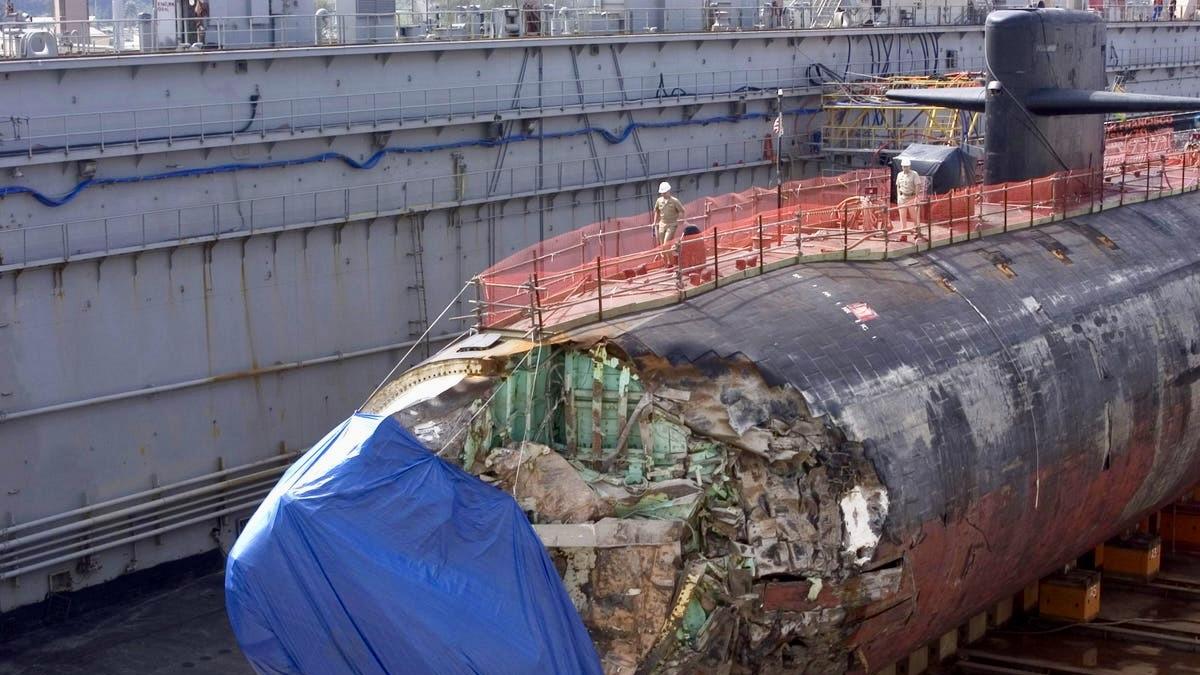Who’s to Blame When a $3 Billion Submarine Runs Aground?

On October 2, the U.S. nuclear attack submarine USS Connecticut hit an unknown underwater object while operating submerged in the South China Sea. 11 sailors were injured in the collision forcing the Connecticut to limp back to Guam on the surface to assess the damage to the $3 billion warship.
As a submarine veteran connected to the submarine community, I heard a lot of speculation about what might have happened. Was it a collision with another submarine? Were they operating in the shallow waters near the coast of a foreign nation?
Most of the submarine veterans I spoke to came to the same conclusion – it was probably an uncharted seamount, something we all feared.
Seamounts are significant geologic landforms that rise from the ocean floor, but do not reach the surface. They are formed by extinct volcanoes and rise abruptly to more than 13,000 feet, as tall as the Grand Tetons in Wyoming.
Despite having detailed charts of the ocean floor, many seamounts are unknown. Driving a submarine into one of them at high speed is the equivalent of flying an airplane into the side of a mountain shrouded in fog – it can be deadly.
In 2005, the USS San Francisco struck an uncharted seamount at full speed near Guam. One sailor died in the collision.
So, who is to blame when a nuclear submarine slams into one of these uncharted sea mountains?
Everyone in the U.S. Navy knows the answer to that question – it’s the Captain.
The Navy has a zero-tolerance policy for running a ship aground.
Not surprisingly, the Navy just announced that the Captain of the Connecticut was relieved of command due to a “loss of confidence.” The Navy wants their billion-dollar warships operating in liquids, not solids. When there’s a collision, the Captain always loses their job.
Even if the Captain wasn’t standing watch at the time, they are still liable.
You’re probably thinking, how is this fair?
How is it fair that the Captain, who isn’t even driving the boat or giving orders at the time, can still be liable if something wrong happens?
Well, the answer deals with how the Navy views responsibility.
The Navy believes the Captain is fully responsible for everything that happens onboard. If the ship runs aground, it’s ultimately the Captain’s fault for not training the crew and supervising them properly.
This is how the Navy views responsibility – the leader is ultimately responsible for everything that happens on their watch.
It’s a refreshing view of leadership.
Too often, we hear stories of politicians and corporate bosses ducking their responsibilities. They try to point the finger of blame on others in their organizations when things go wrong.
President Truman had it right when he famously said, “the buck stops here.” He had a no-nonsense approach to accepting responsibility for any decisions he made as President. He knew that he was ultimately responsible for everything that happened on his watch.
Accepting responsibility is a sign of a mature leader. People want to work for a leader who stands up for their team and doesn’t try to pass the blame when things go wrong.
Leadership is more than just the title, the perks and the paycheck. It’s about being responsible for the mission and the people under your care.
As leaders, we cannot pass the blame.
We must always be responsible and accountable, especially when things go wrong.
[Photo Credit: The USS San Francisco in drydock after the collision. U.S. Navy photo by Photographer’s Mate 2nd Class Mark Allen Leonesio]
References
USS Connecticut CO, XOI, COB Relieved Over Collision in South China Sea 'Due to Loss of Confidence
Navy fires leaders of USS Connecticut following submarine crash into undersea mountain